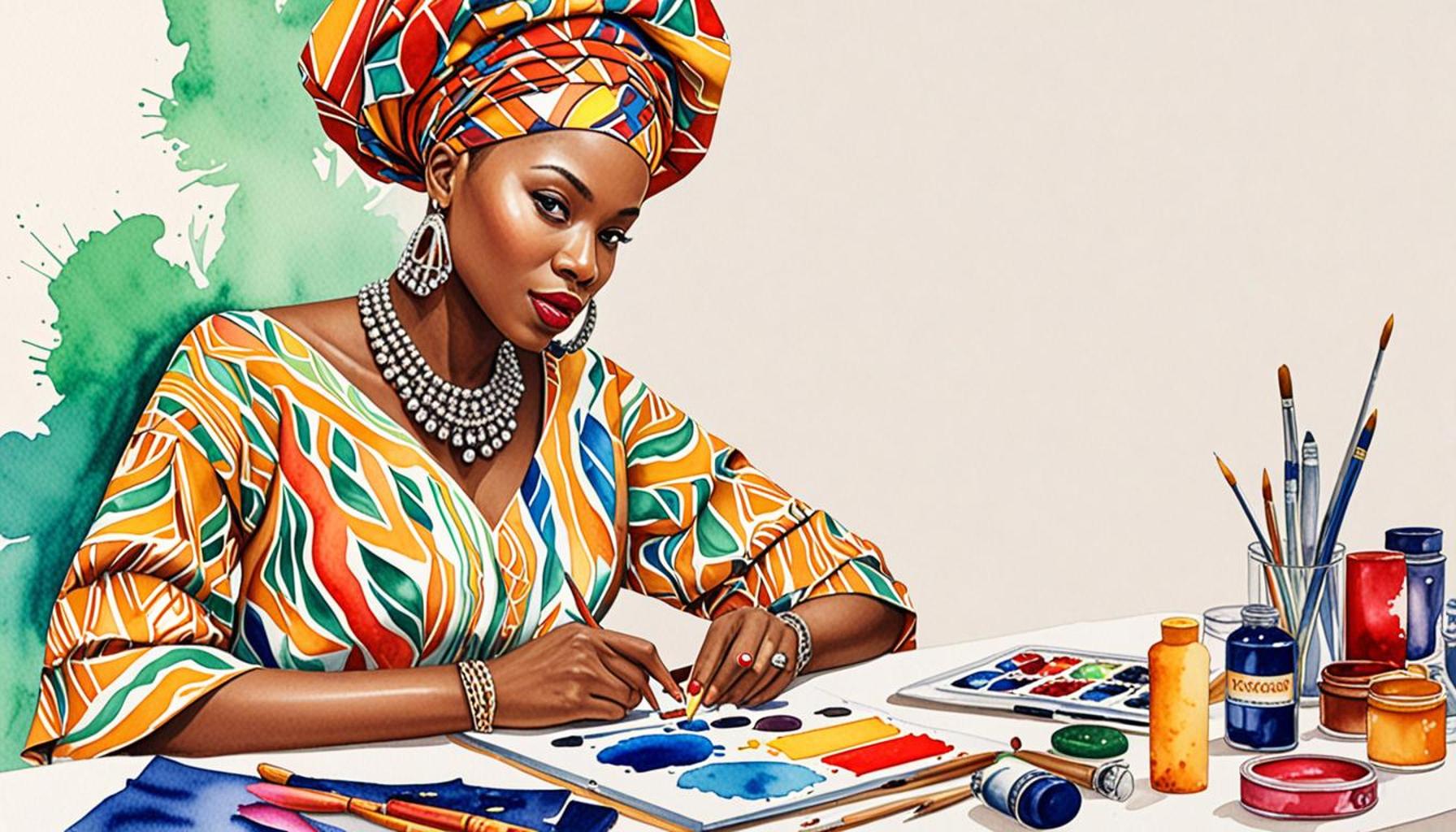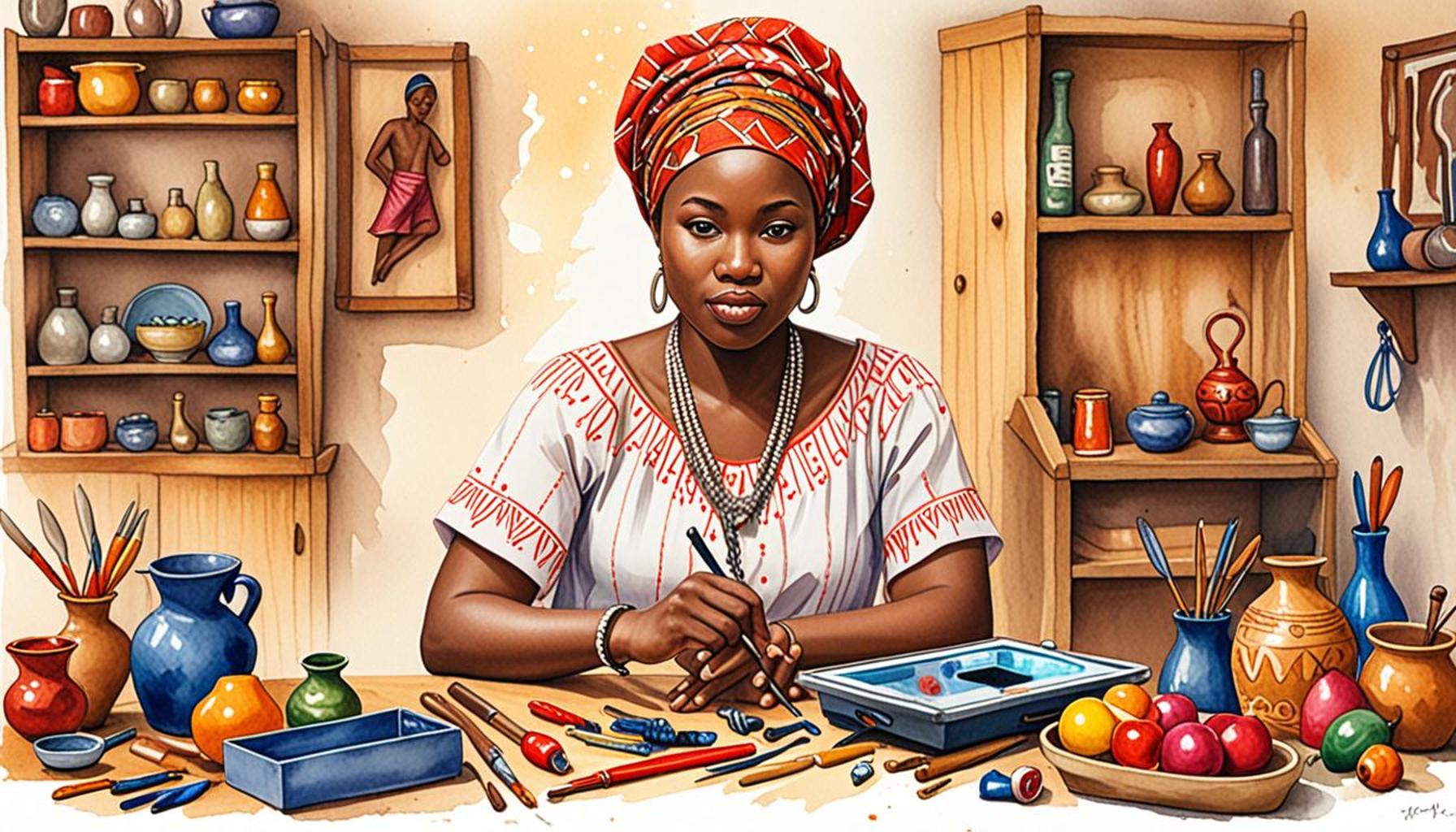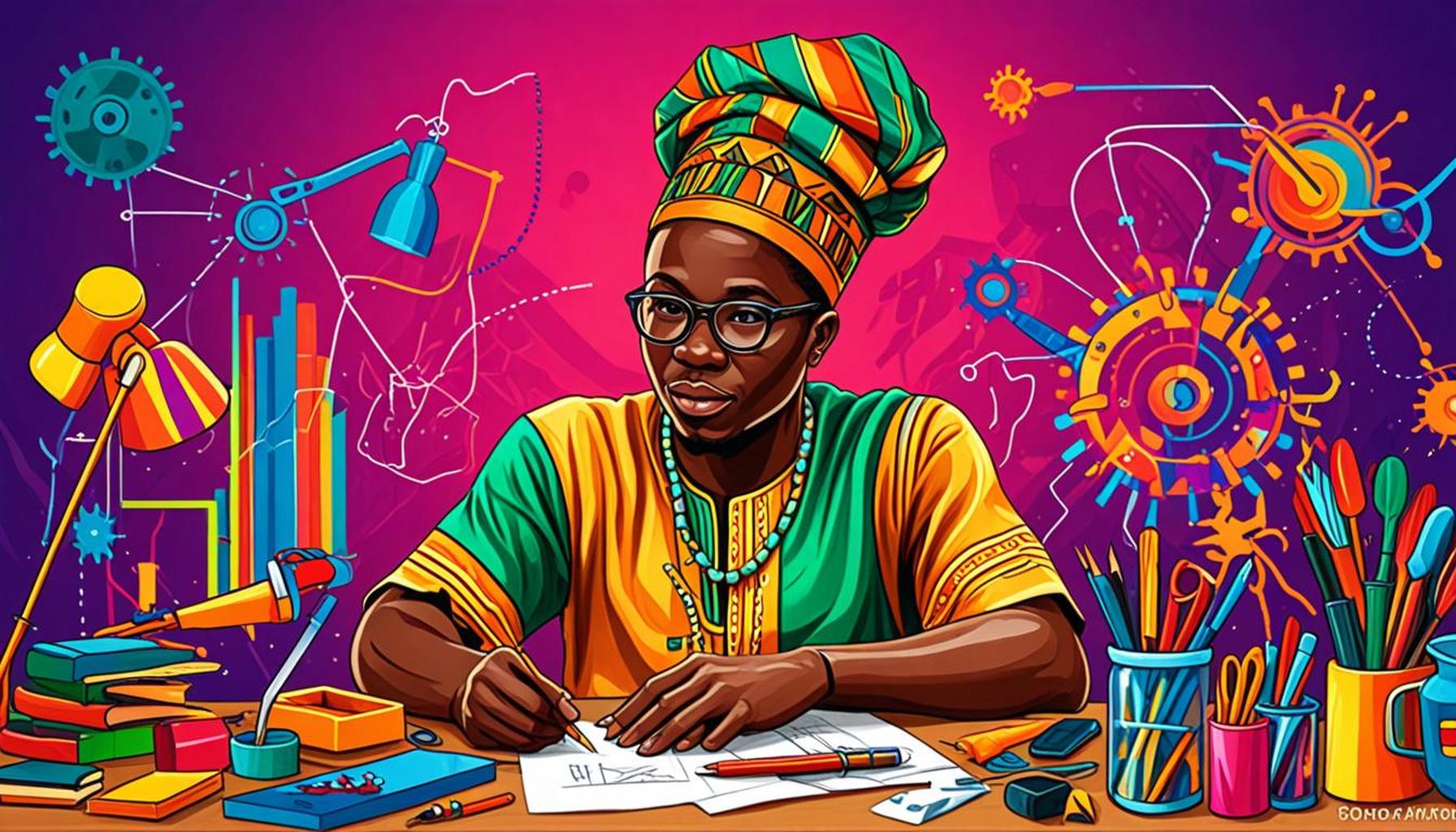The Influence of Social Media on the Evolution of Modern Crafts in Nigeria
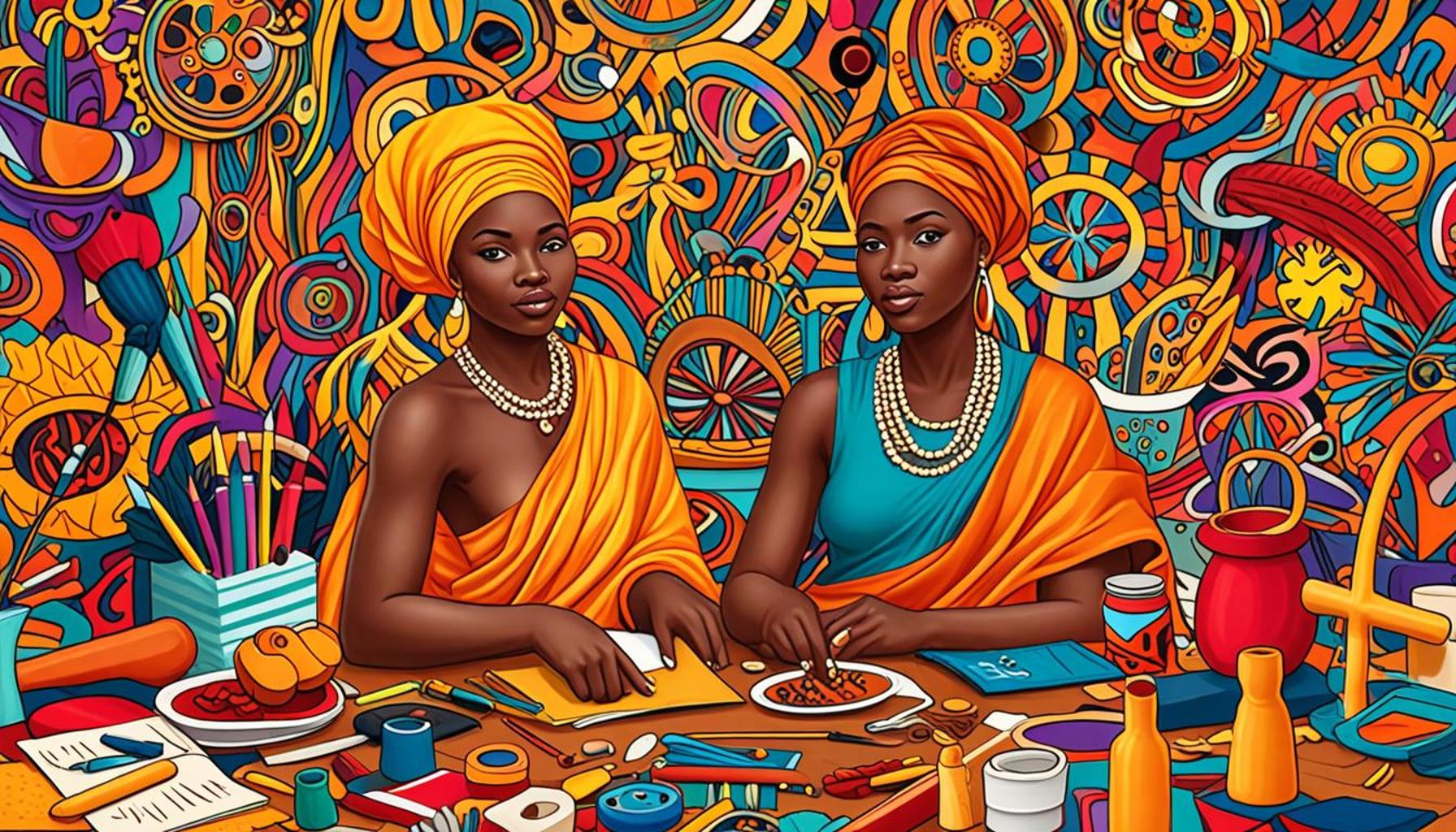
Igniting Creativity in Nigeria
In recent years, social media platforms have transformed the landscape of craftsmanship in Nigeria. From showcasing traditional techniques to sharing innovative designs, these digital spaces foster a vibrant community of artisans and craft enthusiasts. The evolving relationship between social media and local craftsmanship has led to significant changes, impacting both artists and consumers alike.
Key Features of Social Media’s Influence
- Increased Visibility: Craft practitioners can now reach broader audiences beyond their local markets. For instance, a bead maker from Lagos can attract customers from as far as the United States or Europe by simply posting captivating photos of their work on Instagram. This newfound global audience not only offers potential sales but also allows artisans to promote their cultural heritage.
- Networking Opportunities: Artisans connect with each other and collaborate, sharing skills and resources. Online forums and groups on platforms like Facebook allow for knowledge exchange, where a textile artist can learn from a furniture maker about sustainable materials. Such collaborations are becoming increasingly common, enriching the craft ecosystem.
- Market Trends: Social media influences trends, allowing crafts to evolve with contemporary tastes. Popular hashtags like #NigerianArt or #HandmadeInNigeria create a sense of community and help artisans tap into current trends. A young leatherworker might find inspiration in global fashion trends, adapting them to local materials and techniques.
This digital revolution has also allowed traditional crafts to adapt and flourish in new forms. Young Nigerian artisans leverage platforms like Instagram and TikTok to document their creative processes, inspiring others to explore their cultural heritage. For example, a craftswoman could share a step-by-step tutorial on weaving traditional Aso Oke, thus encouraging the younger generation to appreciate and participate in this rich cultural practice. As traditional methods blend with modern aesthetics, the outcome is a unique fusion, bringing forth a new era in Nigerian art.
Challenging the Norms
Furthermore, the influence of social media brings both opportunities and challenges. It promotes sustainability and innovation but also exposes artisans to fierce competition. For every unique piece that a craftsperson shares online, there may be hundreds of similar products vying for attention. Understanding this dynamic is essential for anyone wanting to dive deeper into the world of modern crafts in Nigeria.
This competitive landscape compels artisans to differentiate their work by infusing personal stories into their crafts, showcasing their unique processes, and highlighting the cultural significance behind their creations. As the scene evolves, the importance of branding and storytelling in craftsmanship cannot be overstated. Artisans who effectively use social media to communicate their narratives not only capture consumer interest but also foster deeper connections with their audiences.
In summary, the interplay between social media and craftsmanship in Nigeria reflects a broader cultural shift, shedding light on diverse artistic expressions while challenging artisans to innovate and adapt in a rapidly changing marketplace. This vibrant landscape invites further exploration and engagement, encouraging both artisans and consumers to support and celebrate the unique flair of Nigerian creativity.
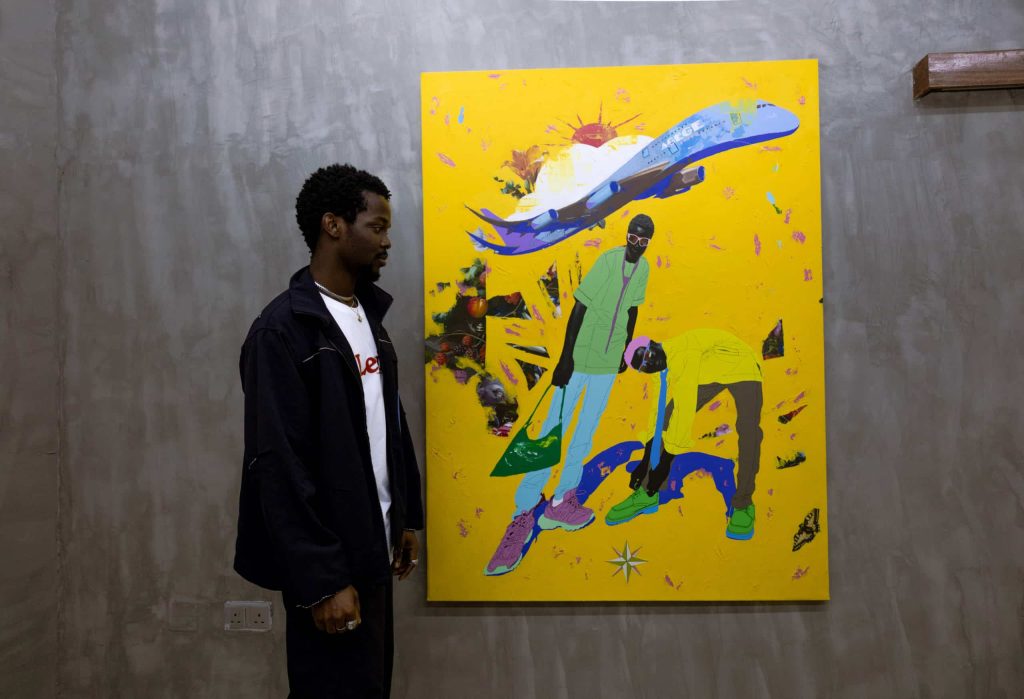
ADDITIONAL INSIGHTS: Expand your understanding here
Shaping Artisan Narratives in the Digital Age
The advent of social media has not only broadened the horizons for artisans in Nigeria but has also allowed them to partake in a global conversation about craftsmanship. Traditional artisans are increasingly leveraging these platforms to narrate their unique stories, transforming their cultural expressions into a form of digital storytelling that resonates with a wider audience. As a result, the identity of modern Nigerian crafts is dynamically shifting to reflect contemporary values while remaining rooted in cultural legacy.
Empowerment through Community Engagement
Social media serves as a powerful tool for community engagement and empowerment. Artisans from diverse backgrounds now have the opportunity to connect with each other, share techniques, and collaborate on projects that cross cultural and geographical boundaries. The creation of virtual marketplaces on platforms like Facebook and WhatsApp enables craftspersons to showcase their works while interacting directly with potential customers, which has been especially beneficial for women artisans who may have limited access to conventional retail spaces.
- Skill Development: Social media facilitates an accessible learning environment where artisans can acquire new skills through video tutorials and live workshops. This democratization of information allows craftspeople to hone their abilities and innovate their products, ensuring relevance in a rapidly changing market.
- Product Feedback: Instant feedback from online communities enables artisans to refine their offerings. Through platforms like Instagram, artisans can gauge consumer reactions to their crafts and adapt future designs accordingly, ensuring their creations resonate with market demands.
- Promotion of Local Culture: Artisans have the unique opportunity to highlight Nigeria’s diverse cultural heritage by sharing the stories behind their crafts. These narratives amplify the significance of local traditions, fostering a sense of pride and connection among consumers both domestically and internationally.
This engaging environment encourages a two-way dialogue, leading to partnerships and collaborations that were previously unimaginable. For instance, a renowned ceramic artist in Abuja may collaborate with a textile designer from Enugu to create a unique product line that melds materials and techniques from different regions of Nigeria. Such synergies not only enhance the quality and variety of products offered but also enrich the cultural tapestry of Nigerian crafts.
Innovative Trends and Consumer Behavior
The influence of social media extends beyond artisan interaction; it also directly impacts consumer behavior. With visual-centric platforms rising in popularity, consumers are increasingly attracted to aesthetics that reflect modernity intertwined with tradition. This display of creativity allows artisans to position their crafts within the context of current trends, leading to an emergence of new styles and functionalities. As a result, practices like upcycling and sustainable crafting are gaining momentum, appealing to a more environmentally-conscious consumer base.
Moreover, online challenges and competitions often spur vibrant trends in the handcrafted market, where participants showcase their interpretations of specific themes or styles. This gamified aspect of social media not only boosts artisans’ visibility but creates a sense of camaraderie among them, nurturing a culture of support and inspiration.
In essence, social media has become an integral part of the evolution of modern crafts in Nigeria, cultivating creativity, connectivity, and cultural pride. As artisans explore innovative ways to express themselves and adapt to market shifts, they lay the groundwork for a new age of craftsmanship that honors both tradition and modernity. Social media has played a pivotal role in the transformation of modern crafts within Nigeria, engaging artisans and enthusiasts alike in a global conversation. By using platforms such as Instagram, Facebook, and TikTok, craft creators can showcase their work to a vast audience, transcending geographical barriers. The visibility gained through these platforms can lead artisans to explore collaborative projects, thus fostering a sense of community and innovation.One significant aspect is the ability to reach niche markets. Craftspeople can identify and interact with consumers who share similar interests or aesthetics. Social media analytics equip artisans with valuable insights into consumer trends, enabling them to adapt their creations to meet changing demands swiftly. This responsiveness not only enhances the marketability of their crafts but also encourages the incorporation of contemporary themes into traditional styles.Additionally, online challenges and trends have introduced a new dynamism to craft production, where artisans can participate in viral trends that boost their exposure. For example, challenges showcasing specific techniques can encourage skill enhancement and creativity, which in turn enriches the overall craft culture in Nigeria. Furthermore, social media platforms serve as vital education hubs, where emerging artisans can access tutorials and learn from established creators. These online resources democratize knowledge, allowing more individuals to enter the craft space, leading to a diversification of styles and techniques that reflect Nigeria’s rich cultural heritage while embracing modern influences.In an era marked by the intersection of tradition and technology, social media continues to redefine what it means to be a craftsperson in Nigeria. The ongoing dialogue fosters an environment ripe for innovation, ultimately shaping the evolution of crafts in today’s society. Together, these factors create a vibrant landscape where the influences of both heritage and contemporary trends coexist, inviting further exploration into the dynamic relationship between social media and craftsmanship in Nigeria.
| Advantages of Social Media | Direct Impact on Crafts |
|---|---|
| Enhanced Visibility | Artisans can showcase their work to a global audience, increasing recognition. |
| Access to Niche Markets | Creators identify and connect with consumers sharing similar styles. |
ADDITIONAL INSIGHTS: Expand your understanding here
Driving Commercial Success through Digital platforms
As social media becomes the backbone of modern craftsmanship in Nigeria, it significantly impacts the commercial landscape for artisans. The shift to digital platforms not only changes how artisans market their crafts but also redefines customer engagement and commerce. The convenience offered by social media platforms such as Instagram, Facebook, and TikTok fosters an environment where artisans can reach a global audience, elevating the traditional craft sector in unprecedented ways.
Marketplace Dynamics and E-commerce Integration
Social media’s role as a marketplace is increasingly prominent. Artisans are not just showcasing their work; they are actively engaging in e-commerce. Platforms like Facebook Marketplace and Instagram Shops allow craftspersons to sell their goods directly to consumers without needing a physical store. This model eliminates geographical limitations, permitting artisans from rural areas in Nigeria to access a global customer base.
- Brand Building: Craftspersons are utilizing social media to create and shape their brands. By curating profiles that reflect their mission, aesthetics, and storytelling, artisans are establishing a unique identity that resonates with their target audience. For instance, a bead maker from Lagos may engage followers by sharing insights into the bead-making process, culminating in a deeper appreciation for their art and boosting sales.
- Customer Relationships: Direct interaction with consumers through comments and messages fosters stronger relationships. Artisans can respond to inquiries, customize orders, and nurture loyalty by showcasing their personalities. This transparency creates a community of supporters who feel personally invested in the artisan’s success.
- Influencer Collaborations: The trend of collaborating with local influencers is on the rise, further enhancing visibility. Influencers can amplify a craftsman’s reach exponentially by introducing their audience to new artisans and their creative journey. This strategy leads to increased sales and provides artisans with the advantage of authentic promotion.
These evolving marketplace dynamics propel the craft industry into a more competitive arena. The shift from traditional selling methods, which often depended on physical markets and artisan fairs, to online platforms requires artisans to adapt swiftly, embracing new tools and strategies that maximize their commercial potential.
Innovative Use of Multimedia as Marketing Tools
Incorporating multimedia in promotions is another significant evolution brought about by social media. Artisans are increasingly using video content to showcase the intricacies of their craft. Platforms like TikTok are proving to be particularly effective, as short, engaging videos allow craftspeople to highlight their skills and craft stories in captivating ways. This method not only provides entertainment but also educates potential customers about the processes behind each creation.
Furthermore, live streaming has opened avenues for real-time engagement. Artisans can host live sessions to demonstrate their crafting process, answer questions, and even conduct virtual sales. This interactive approach humanizes the craft, creating a more intimate shopping experience and dramatically enhancing customer loyalty.
As artisans navigate the complexities of social media and e-commerce, they also receive valuable insights into market trends based on user interactions and behaviors. Through analytics, they can track what resonates with their audience, helping to refine their offerings continually. This ability to adapt based on real-time feedback not only amplifies their chances of success but also establishes a resilient ecosystem for modern crafts in Nigeria, celebrating both innovation and heritage.
The merger of traditional craftsmanship with social media not only preserves cultural narratives but also redefines the economic landscape for artisans. By embracing this digital age, they lay the groundwork for a flourishing craft industry that honors the past while boldly stepping into the future.
ADDITIONAL INSIGHTS: Expand your understanding here
Conclusion
The influence of social media on the evolution of modern crafts in Nigeria has been nothing short of transformative. From establishing a global marketplace to cultivating direct consumer relationships, platforms like Instagram and TikTok have become essential tools for artisans seeking to thrive in the competitive landscape of today. As we have explored, the transition from traditional selling methods to digital commerce not only democratizes access for artisans, particularly those in rural areas, but also enhances their creative expression through innovative multimedia storytelling.
Craftsmanship in Nigeria is being redefined as artisans leverage the power of social media to build brands, engage with customers, and tap into e-commerce opportunities. The shift has enabled artisans to narrate their stories, showcase their techniques, and create a sense of community around their crafts. This not only elevates their art but also fosters a renewed appreciation for Nigerian cultural heritage.
Moreover, the collaborative spirit facilitated by social media, especially through influencer partnerships, amplifies visibility and drives sales, ensuring that modern crafts in Nigeria enjoy robust growth. However, as the landscape continues to evolve, it is crucial for artisans to stay informed about market trends and maintain authenticity to keep their audience engaged. This journey into the digital realm may hold challenges, yet it equally offers boundless possibilities for innovation and connection.
Ultimately, the merging of traditional craftsmanship with modern technology presents a unique opportunity for artisans in Nigeria to carve out their niche on a global stage, honoring age-old practices while boldly navigating the future. As the craft industry flourishes within this digital space, it invites further exploration into how social media will continue to shape the narrative around creativity, culture, and commerce in Nigeria.
